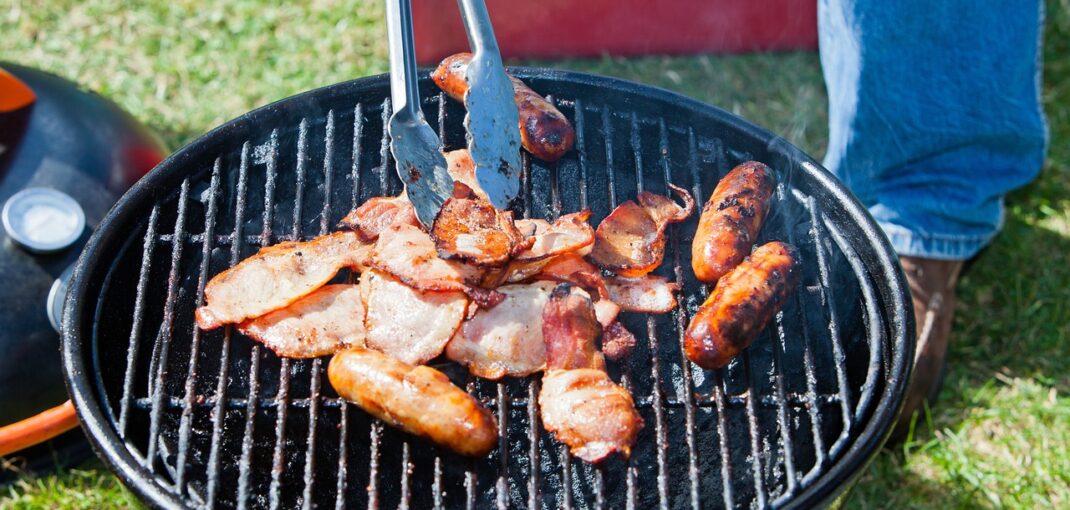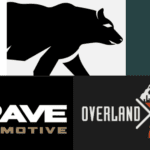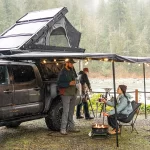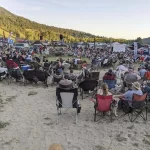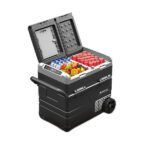Overlanding isn’t just about exploring. It’s about savoring the journey – every bit of it.
Now, there wouldn’t be much savoring if you’re busy enduring bland meals every night at your campsite.
If you’re planning an overlanding adventure and you want to keep the boring, bland meals out of sight, then what you need is a fire cooking grill.
In this article you’ll learn how to choose and use a fire cooking grill for your overlanding adventure.
Importance Of A Fire Cooking Grill In Overlanding:
A fire cooking grill isn’t just a luxury – it’s a versatile tool that can transform your overland meals from basic camp fare to culinary masterpieces. Here’s why:
- Versatility: From sizzling sausages for breakfast to hearty stews simmering over low heat, a fire grill opens up a world of culinary possibilities. You’re not limited to pre-packaged meals or basic camp cooking.
- Flavor: There’s something undeniably special about the smoky flavor imparted by cooking over an open fire. It adds a depth and complexity that simply can’t be replicated with a camp stove.
- Compactness And Portability: Modern fire grills are designed to be compact and portable, which makes them ideal for overlanding. They can easily be packed into your vehicle and set up at your campsite in minutes.
Types Of Fire Cooking Grills For Overlanding
Now that you know why a fire cooking grill is essential, let’s explore the different types available:
- Wood: The classic choice, wood-fired grills offer a traditional campfire experience and a unique smoky flavor. However, they can be time-consuming to light and maintain, and firewood availability can vary depending on your location.
- Charcoal: Charcoal grills provide a convenient and portable option, offering good heat control and a consistent smoky flavor. However, they require charcoal briquettes, which can add weight and bulk to your gear.
- Gas: Gas grills offer the ultimate convenience, with quick ignition and easy temperature control. They’re ideal for larger groups or those who want a hassle-free cooking experience. However, they may not be allowed in all areas due to fire restrictions, and they require carrying gas canisters.
- Combination: Combination grills offer the best of all worlds, allowing you to switch between wood, charcoal, and gas depending on your needs and preferences. However, they can be heavier and more complex than single-fuel grills.
Choosing Your Fire Cooking Companion
Planning your overland adventures often involves picturing yourself gathered around a crackling fire, sharing stories and enjoying delicious meals cooked over an open flame.
But amidst the excitement, choosing the right fire cooking grill can feel overwhelming. But don’t worry, we’re here to give you the knowledge you need to select the perfect grill for your overlanding adventure.
Group Size
- Small Group (1-2 people): A compact and lightweight grill with a cooking surface of around 200 sq. in. will suffice. Consider portable charcoal or gas grills, or even a camp stove with a grill attachment.
- Medium Group (3-4 people): Opt for a grill with a cooking surface of 300-400 sq. in. Look for wood or charcoal grills with adjustable grates, or larger gas grills with multiple burners.
- Large Group (5+ people): Choose a spacious grill with a cooking surface exceeding 400 sq. in. Consider combination grills offering multiple fuel options and features like side tables and griddles.
Portability and Weight
Overlanding is about freedom and exploration, so don’t let your grill become an anchor. Prioritize lightweight grills made from aluminum or stainless steel if space is limited. Also, collapsible or folding designs are a good option, as they fit neatly into your vehicle and minimize precious cargo weight.
Think about carrying options too. Built-in handles, carrying bags, and stands that fold down make transportation a breeze. Utilize your vehicle’s space wisely by stacking smaller grills on top of larger ones or packing them inside storage containers for a clutter-free journey.
Durability
Your grill should be a trusty companion, not a one-time fling. Opt for high-quality materials like thick gauge steel or cast iron for grills that can withstand the rigors of the road. You should also look for weather-resistant finishes to shield your investment from the elements.
Fuel Source
Not all destinations are created equal when it comes to fuel availability. Research firewood availability and restrictions at your planned campsites. If firewood is scarce or prohibited, consider charcoal or gas alternatives to avoid getting caught unprepared.
Local regulations are also crucial. Be sure to familiarize yourself with fire restrictions and permitted fuel types to avoid any mishaps. Choose sustainable fuel options like sustainably sourced firewood whenever possible, minimizing your environmental impact and ensuring responsible enjoyment of the outdoors.
Properly Using A Fire Cooking Grill
Now that you’ve chosen the perfect fire cooking companion, it’s time to unlock its full potential!
Taming the Fire
The key to fire cooking mastery lies in understanding and controlling the heat. Forget about blindly throwing food on the flames; here’s how to become a fire whisperer:
- Start with a good base: Build a pyramid of charcoal or seasoned wood for even heat distribution. Allow it to come to glowing embers before cooking.
- Two-zone cooking: Create direct heat and indirect heat zones on your grill. Sear foods directly over the flames for a perfect char, then move them to the indirect zone for gentle cooking and even doneness.
- Control the airflow: Use dampers, vents, or lid positioning to adjust airflow and regulate heat intensity. Closing the lid traps heat for roasting, while opening it allows for higher temps for searing.
- Practice makes perfect: Experiment with different fuel types, fire setups, and temperature control techniques. Every fire is unique, so learn to read its nuances and adjust accordingly.
Safety First
Remember, fire demands respect. Always prioritize safety with these essential practices:
- Keep flammable materials well away from your grill.
- Never leave a fire unattended
- Keep a fire extinguisher or bucket of sand nearby for emergencies.
- Let ashes cool completely before carefully disposing of them in designated areas.
By following these simple guidelines, you can ensure your overlanding fire cooking experiences are not only delicious but also safe and responsible.
Conclusion
With the right fire cooking grill and the knowledge to wield it like a seasoned pro, you can transform your campsite into a haven of delicious meals and warm memories.
Want to delve deeper into the world of overlanding and fire cooking? Head over to Kermode Overland. You’ll find a wealth of resources, inspiration, and tips to help you plan your next adventure and make every meal a masterpiece. From choosing the right gear to mastering fire control techniques, Kermode Overland is your one-stop shop for all things overlanding.

